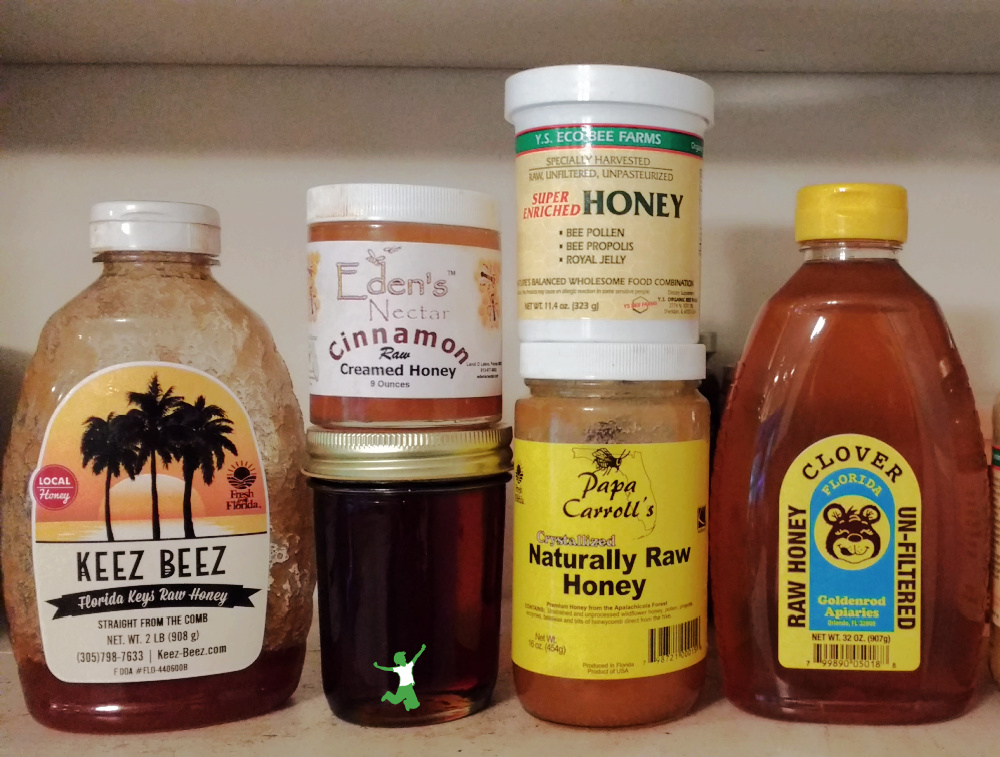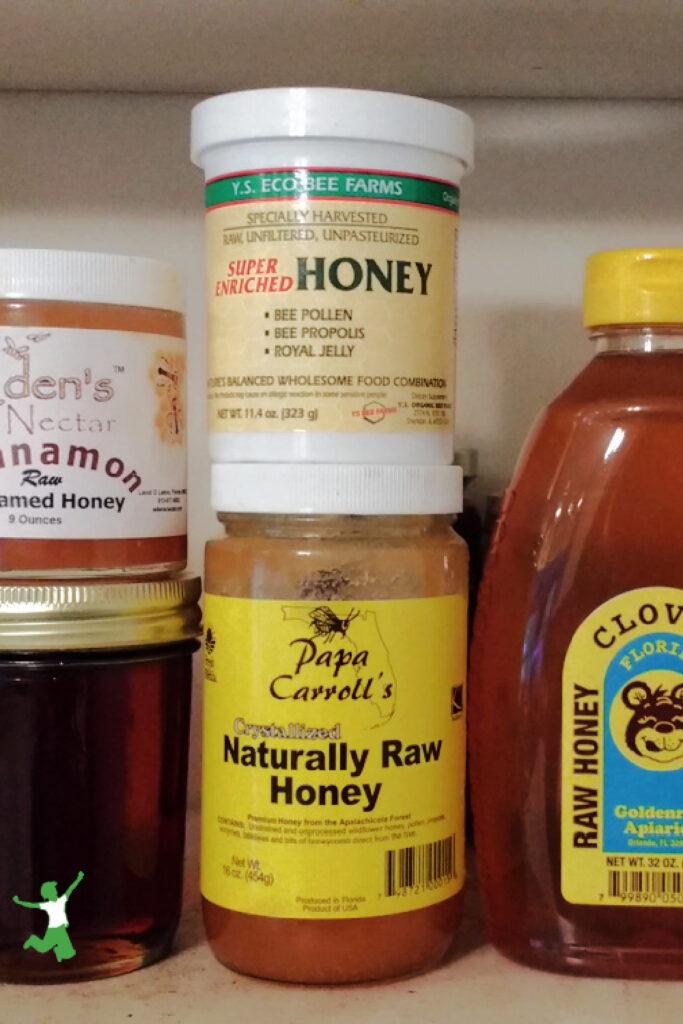Desk of Contents[Hide][Show]
One of the best varieties of uncooked honey, ranked cleanest to most contaminated, primarily based on the air pollution potential of the blooms supplying the nectar to the bees.

As a novice beekeeper, I’ve turn out to be very all in favour of understanding precisely the place my bees are getting the nectar that they make into the uncooked honey I harvest for our household and mates.
Clearly, if the vegetation the bees are foraging nectar from are sprayed or in any other case rising in polluted areas, the uncooked honey will consequently be lower than perfect and even contaminated!
That is one massive purpose why it is rather necessary to know your beekeeper personally in order that you realize the precise location of his/her hives and whether or not that space is clear sufficient to eat honey from!
It’s additionally attainable the bees might be foraging nectar from flowers of GMO vegetation akin to canola, which has shiny yellow flowers that bees are very interested in.
Natural uncooked honey is a incredible choice if you could find a neighborhood supply for it.
For uncooked honey to be licensed natural, the USDA requires the apiary to be situated in areas the place nectar and pollen sources inside a 3-mile (4.8 km) radius are predominantly natural or wild and free from prohibited substances (e.g., artificial pesticides, herbicides, or GMOs).
This doesn’t imply each crop or plant should be licensed natural inside that radius, however the space should be sufficiently remoted from typical agriculture to keep away from contamination.
Since honeybees can forage as a lot as 5-7 miles from their hive, these natural requirements aren’t good and solely demand unsprayed flowers, crops and vegetation throughout the typical 1-3 mile honeybee foraging vary.
Thus, the potential for bees to fly greater than twice that distance remains to be a chance.
Kinds of Uncooked Honey Ranked Finest to Worst
Now that we’ve mentioned how uncooked honey may be contaminated if there are pesticides/herbicides/GMOs inside a 5-7 mile radius of the apiary, I’ll listing the varied varieties of uncooked honey that you could be encounter on the farmer’s market or domestically owned healthfood shops.
These “clear or contaminated” rankings would come with creamed honey in addition to liquid honey.
Trace: if a specific model of uncooked honey doesn’t listing the nectar supply on the label and you can’t ask the beekeeper instantly concerning the whereabouts of the apiary to verify pollution-free zones, I might counsel avoiding it to be on the secure aspect.
Cleanest
Beneath are the varieties of uncooked honey which have the least potential for chemical residues.
Manuka
Uncooked manuka honey (Leptospermum scoparium) is on the high of the listing for the cleanest sort of honey you should purchase. Present in Australia and New Zealand, these native bushes primarily develop in distant areas with very low chance for contamination.
That mentioned, manuka honey may be very strong-tasting and greatest for medicinal use slightly than topping a bowl of oatmeal or blended into yogurt.
One of these honey can be not native for almost all of the planet, so using manuka as a pure antibiotic is how I exploit it in our house.
Tupelo
Tupelo honey comes from the nectar of the tupelo gum tree (Nyssa ogeche).
These native timber develop within the pristine, unsprayed swamps of Florida and Georgia.
The remoted wetlands which might be house to tupelo gum timber have brief bloom yields, which works to additional favor their excessive standing because the cleanest uncooked honey in america.
Because of this, tupelo honey is commonly capable of be licensed natural.
Provided that Florida has additionally banned chemtrails (as of July 2025), the probability of bloom contamination from the skies is low as effectively.
Thus, subsequent to the honey produced by my very own beehives, tupelo is my most well-liked honey to purchase domestically as I stay in Central Florida.
Acacia
Blooms from the acacia tree (Robinia pseudoacacia) present the plentiful nectar for honeybees to make acacia honey.
These timber primarily develop in untouched forests that might be uncovered to little to no chemical spraying.
Sourwood
Sourwood honey comes from wildflowers in distant areas of the Appalachian Mountains with little to no air pollution or contaminants.
Generally Clear, Generally Not
The varieties of uncooked honey beneath can typically be clear sufficient to eat, however typically are usually not.
In case you have a supply for most of these honey that you just get pleasure from, you’ll want to examine the precise location of the apiary to make sure no polluted areas are inside a 5-mile radius.
Linden
The blooms of the linden timber present the nectar for one of these honey.
These timber are often present in city or city adjoining areas slightly than pristine forests or mountains. Thus, linden honey has a better potential for contamination.
For those who stay in a rural space, one of these native honey is probably going high-quality.
Orange Blossom
Orange groves present the amazingly candy nectar for one of these honey.
Orange blossom honey is my private favourite sort of honey. Nevertheless, I’ll solely purchase it if licensed natural as a result of the standard orange groves the place these apiaries are usually positioned are pretty closely sprayed.
Clover
Like orange blossom, typical clover honey has the potential for residues on condition that it usually comes from blended pastures with farms close by that possible make use of some sort of spraying.
For those who love the style of clover honey like I do, search for it from native beekeepers who can attest to its purity.
Dirtiest Kinds of Uncooked Honey
The next varieties of uncooked honey have a excessive probability of contamination and/or glyphosate residues.
It’s best to keep away from them until you receive it from a beekeeper who can personally attest to its purity.
- Alfalfa honey. Area crop that’s possible extremely sprayed and/or Roundup Prepared alfalfa.
- Sunflower honey. Intensive monoculture with excessive neonicotinoid detection.
- Buckwheat honey. Darkish honey with pesticide residues possible.
- Rapeseed (canola) honey. Very excessive probability that the honey is from GMO blooms.
What About Wildflower?
The honey from my yard apiary comes from wildflowers within the space. These vegetation are unsprayed in giant open fields inside about 1 mile of my house.
Thus, I’m fairly assured that it’s clear.
For those who get pleasure from wildflower honey, it may be clear or contaminated primarily based on the placement.
Wildflower honey’s cleanliness hinges on the foraging radius (as much as 5-7 miles from the apiary).
Distant wildflower honey ranks excessive attributable to pristine sources, whereas agricultural or city variants are greatest averted as a result of probability of contaminant publicity.
Beneath is a brief video of a latest harvest of the clear wildflower honey from my yard apiary. No costly gear is required! It’s such a enjoyable passion, which I extremely advocate!
References
(1) USDA Natural Certification
(2) Organochlorine pesticide residues in Uganda’s honey as a bioindicator of environmental contamination and reproductive well being implications to customers
(3) Dedication of neonicotinoids and 199 different pesticide residues in honey by liquid and gasoline chromatography coupled with tandem mass spectrometry
